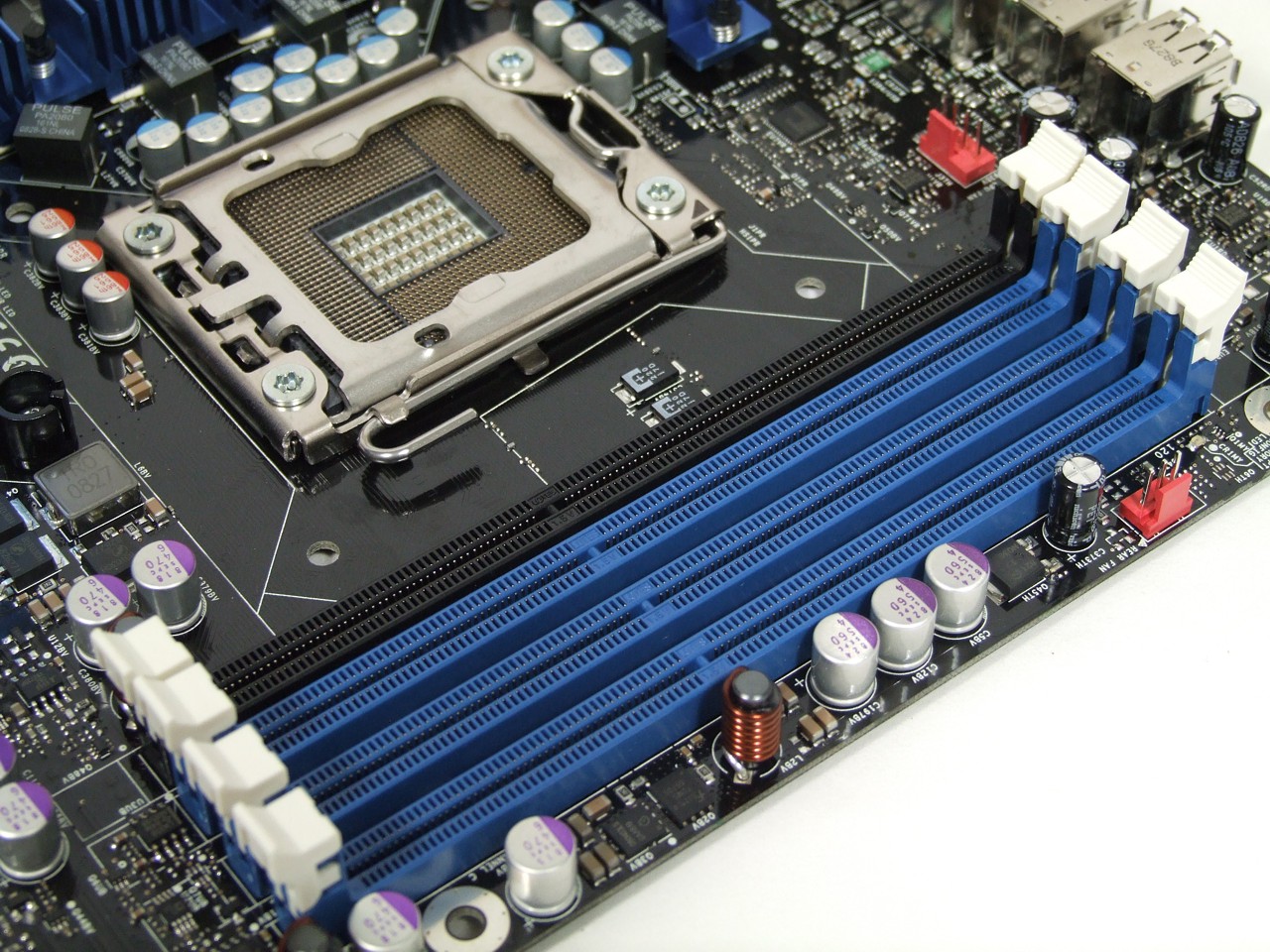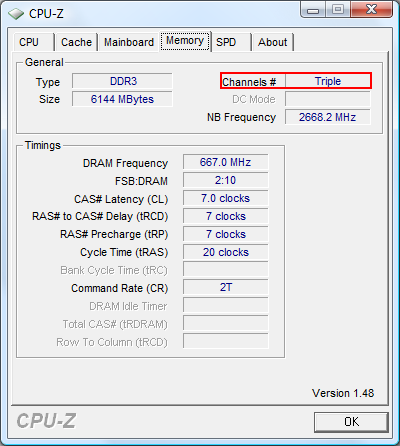UPDATE: Core i7: Blazing Fast, O/C Changes
Memory Interface--Tri-Channel And DDR3-1600
The Integrated Memory Controller
One of the most widely publicized changes that Intel is making with the Core i7 is moving the memory controller into the CPU itself. Its memory interface supports DDR3 exclusively, and can group three memory modules into a tri-channel array. Depending on the processor, different memory speeds will be supported ; for example, the Core i7 920 and 940 will offer the two memory multipliers, 6 and 8. Together with the internal chip base clock of 133 MHz, that gives us memory speeds of DDR3-800 and DDR3-1066. The Core i7 965 will support the multipliers 10 and 12, giving user the option of installing faster DDR3-1333 or DDR3-1600 RAM.
If you want to run your memory at faster speeds on the lower-end Core i7 models, you’ll have to overclock the CPU’s FSB. In our synthetic tests, the integrated memory controller proved to be much faster than its Core 2 counterpart in the northbridge. It is unclear at the moment whether Intel has given itself the option to use DDR2 in a future revision or lower-cost chip—right now, DDR3 is still more than twice as expensive as DDR2. The Core i7 processor can run in single, dual or tri-channel mode, and it still supports the XMP functionality that can make use of the pre-configured timing profiles offered by some memory modules.
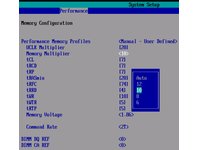
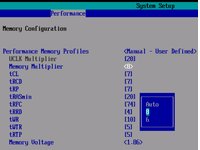
| Processor | Channel | Read | Write | Copy | Latency |
|---|---|---|---|---|---|
| Core i7 | Tri DDR3-1333 | 15.5 GB/s | 13.8 GB/s | 19.4 GB/s | 34.3 ns |
| Core i7 | Dual DDR3-1333 | 14.7 GB/s | 13.8 GB/s | 18.9 GB/s | 29.6 ns |
| Core i7 | Single DDR3-1333 | 10.3 GB/s | 10.3 GB/s | 14.3 GB/s | 28.5 ns |
| Core 2 | Dual DDR3-1333 | 8.1 GB/s | 8.5 GB/s | 7.1 GB/s | 68.8 ns |
| Phenom X4 | Dual DDR2-1066 | 7.6 GB/s | 5.0 GB/s | 8.6 GB/s | 56.3 ns |
We measured the memory bandwidth of the Core i7, and compared it to the fastest Core 2 Extreme QX9770, as well as the Phenom X4 9550 Black Edition. At the same CPU and memory speeds, running in a dual-channel configuration, the Core i7 offers a bandwidth that is on average twice that of the Core 2 ; AMD’s integrated DDR2-1066 memory interface on the Phenom X4 can’t keep up. Running in a tri-channel configuration, the Core i7 reaches a peak bandwidth of 19.4 GB/s.
We can see that the performance increase when going from dual- to tri-channel mode is much lower than when switching from single- to dual-channel mode. It is possible that the Core i7 running at 3.20 GHz is not fast enough yet to reap any real benefit from the added bandwidth of the tri-channel memory interface. Perhaps only future systems or multi-processor server setups will be able to realize performance gains.
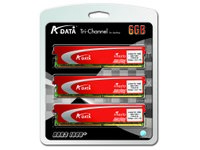
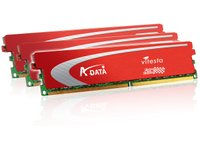
Compared to the Core 2 and AMD’s Phenom X4, the memory interface of the Core i7 has the advantage of giving the system a measurable performance boost. At 34 ns, its latency is also much lower than that of the Core 2 (69 ns) and the Phenom X4 (56 ns). Memory-intensive applications run a good deal faster, in particular. Memory company A-DATA is already offering a tri-channel kit that comes in sizes of 3 GB or 6 GB. We also received 6 GB kits from Corsair and OCZ supporting 1,333 and 1,600 MHz frequencies at Intel’s recommended 1.65V ceiling.
Get Tom's Hardware's best news and in-depth reviews, straight to your inbox.
Current page: Memory Interface--Tri-Channel And DDR3-1600
Prev Page 8 MB L3 Cache And Hyper-Threading Next Page X58 Chipset With ICH10-
pullmyfoot AMD’s HyperTransport protocol can transmit up to 25.6 GB/s at 3.20 GHz.Reply
You mean Intel don't you? Other than that little mistake, good article
-
wh3resmycar hmm, question. once this nehalems come out. will we ever see a dieshrunk c2q again after the penryns? im expecting the price of this procs along with the mobo and ram to be too far off from my budget. orReply -
skywalker9952 One of the first side effects of Intel's domination of the CPU market is beginning to show. Since they don't have to compete with AMD in any market segment the i7 occupies, they have limited (significant) overclocking to only extreme models.Reply
RIP AMD.
May Abu Dhabi restore you to life soon so we don't have to suffer through more Intel ripoffs. -
sonar610 "The fastest Core i7, the 965 Extreme, is more than 2.6 times as fast as AMD’s current flagship CPU, the Phenom X4 9550 BE."Reply
This seems like an editing mistake maybe it should be 9950BE. -
cryogenic Core i7 is a great CPU, the article is not. I can't believe after all this time you still stack overclocked CPUs with unoverclocked ones. It's great to find out the overclocking potential of Nehalem but, at least include some overclocked Penryns in there too, to see how overclocked Nehalem stacks agains OTHER overclocked CPUs, because it's fairly evident that and overclocked new gen CPU will stack well with older non overclocked ones.Reply
-
joseph85 CryogenicCore i7 is a great CPU, the article is not. I can't believe after all this time you still stack overclocked CPUs with unoverclocked ones. It's great to find out the overclocking potential of Nehalem but, at least include some overclocked Penryns in there too, to see how overclocked Nehalem stacks agains OTHER overclocked CPUs, because it's fairly evident that and overclocked new gen CPU will stack well with older non overclocked ones.If it's evident then who cares?Reply -
fender22 skywalker9952One of the first side effects of Intel's domination of the CPU market is beginning to show. Since they don't have to compete with AMD in any market segment the i7 occupies, they have limited (significant) overclocking http://en.wikipedia.org/wiki/Overclocking to only extreme models.RIP AMD. May Abu Dhabi restore you to life soon so we don't have to suffer through more Intel ripoffs.Reply
My thoughts exactly... I wonder if there will be some sort of resistance to this sort of thing... It's like buying a car, you can do whatever you want to it (within the limits of the law) to make it as fast as you want. Sure, you may void your factory warranty, but it's your deal. You don't see car companies making it impossible for you to do what you want to their cars so you have to buy their expensive high end just to get your kicks... (not a perfect comparison, but it works)
I dunno, it's just pretty weak. And they are just taking advantage of the situation... -
cangelini sonar610"The fastest Core i7, the 965 Extreme, is more than 2.6 times as fast as AMD’s current flagship CPU, the Phenom X4 9550 BE." This seems like an editing mistake maybe it should be 9950BE.Reply
Fixed, thanks! -
onearmedscissorb Aside from the all too prevalent and potentially misleading typos, which someone needed to get a handle on as of months ago, I must say that the overall quality of this article is MUCH better than pretty much anything I can remember of the last few months. It's actually informative and thought out, rather than being a mess of assumptions that many people reading already know better than.Reply
Keep it up, and maybe I'll pay attention to this site like I used to.
But just for the record, I don't believe that it's particularly appropriate to use the overall average performance percentages as a basis for comparison between the "speed" of Core 2 vs. Core i7. Obviously, most people are going to be interested in the difference with games, where it's likely to be pretty minimal. But here and there, you have something like the 55% WinRAR difference pretty much skewing what otherwise would have been an accurate depiction of average expectations across the board.
